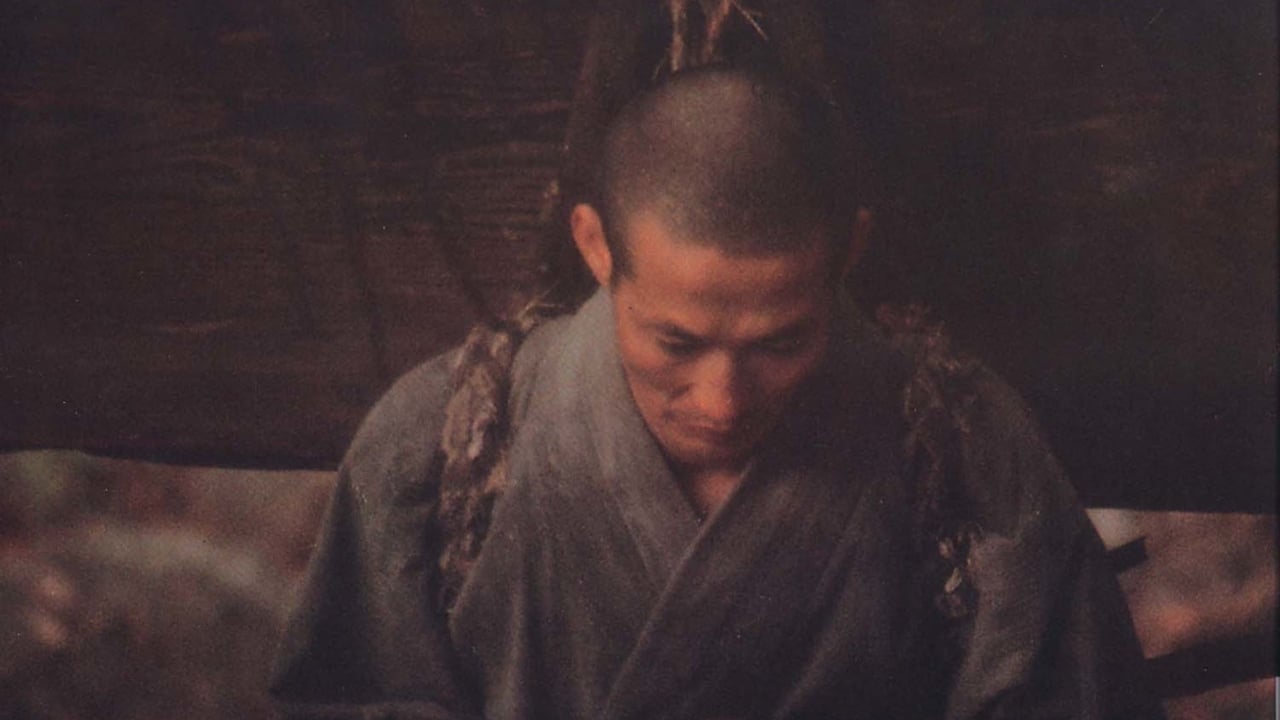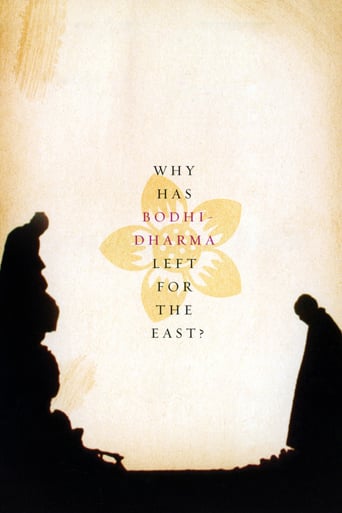

Self-important, over-dramatic, uninspired.
... View MoreAn Exercise In Nonsense
... View MoreThis is a must-see and one of the best documentaries - and films - of this year.
... View MoreIt's funny, it's tense, it features two great performances from two actors and the director expertly creates a web of odd tension where you actually don't know what is happening for the majority of the run time.
... View MoreA strange thing happened to me while watching this movie for the first time: About halfway thru, I lost the desire to pay attention to it. It's not that I lost interest, just that I lost the feeling of need or obligation to pay attention in order to get the most out of it.Cinematic enlightenment? Or just fatigue?Hmmm... probably a little of both, combined with the knowledge that it I can always watch it again.Cinematic reincarnation!This really is a different movie, and I can see it being played on my VCR time and time again, at times when I want to "watch something", but don't...There's just so much to it, so much to think about, so much to see, that one time thru will only give a little sip. And I'm afraid that there are times when it does help to read the subtitles -- although much of the time there are no subtitles.The thing about it is, rather than "teach" Buddhist philosophy, it "gives the experience". It follows its three characters on the path, and gives lessons on letting go.There is a scene where a young boy returns to the grave of a bird he'd buried a few days before: Unable to let go of the bird, unable to accept death, he finds that yes, life goes on, but in ways that he was not ready to accept or understand! In an instant, he's startled by the cry of another bird, and falls from a ledge into a pool of water (there's a lot of water in this movie), where he thrashes about like he's drowning -- and then he stops trying to swim, and simply allows himself to float. Get it?Lots of eye candy, lots of mind candy. If you're a Buddhist, or in any way interested in Buddhism, you must not miss it for anything! If however you're not interested in the least about Buddhist philosophy, but ARE interested in cinematic excellence, see it. It's a masterpiece!
... View MoreThe thing about Why has Bodhidharma Left for the East that struck me the most was the life of the little boy, Haejin. In particular, there are two connected scenes that were superbly done, and the strongest impression I got from Why... is the symbolism to be found within them. In the first of the two scenes, relatively early in the film Haejin picks up a rock off of the ground and, for no apparent reason, takes aim at a bird and hurls the rock at it. After he strikes the bird in the head and the bird falls to the ground, Haejin runs over to it and examines it. At this point, Haejin clearly is stricken with guilt and is remorseful for what he has done. Rushing back to the monastery, he avoids his Master and covertly hides the bird, seeking to nurse the bird back to health.Later in the film, Haejin is swimming with some boys in a pool of water when the boys take to dunking Haejin under the water. As the scene progresses, Haejin is seen emerging from the water repeatedly, struggling, gasping for air and trying to free himself as best he can. Ostensibly, the boys around him do not see that they are harming Haejin; they dunk him underwater for fun, and the possibility that he could drown does not even occur to them. Although, after a few minutes of the dunking, some boys on the outskirts of the pool look on with worried faces, nobody expects that the action could seriously hurt Haejin, and accordingly nobody acts to help him.The most fascinating thing about these two scenes is the parallelism: not particularly thinking of the possible consequences, young boys behave dangerously, and someone or something ends up getting hurt. Haejin thoughtlessly hurls the rock at the bird and damages it physically, whereas the boys at the pool gang up on Haejin and dunk him underwater, terrifying him emotionally. I think this is an issue of karma: Haejin does not think about the consequences of hurting the bird, which is mirrored by the boys' thoughtless torment of Haejin.And yet, another really interesting thing about the situation was the difference in behavior that took place after the thoughtless violence. Immediately, Haejin realized that he had done something wrong, that he had wounded the bird terribly, so he rushed to take care of it and help it. Presumably, the boys who were harassing Haejin did no such thing, for in and after that scene we see neither guilt nor any attempts to mend fences on their part. The immediate question is then why: why does Haejin see the mistake he made and try to rectify his wrong whereas there is no such action by the boys? I think that the answer lies in the fact that the viewer is supposed to note that Haejin is a Buddhist, whereas the boys are from the "world," and it can safely be assumed that they do not follow the path of those in the monastery. The viewer is supposed to identify the distinct difference between those of the monastery and those from the world. The concept of the how the world is can be found in Haejin's master Hyegok's explanation to Haejin that the world outside the monastery is full of pain and thoughtlessness. (The scene at the pool is the point where the director of the film gives the viewer the opportunity to see Haejin in a situation that verifies what the Master said. Kibong had the same opportunity when he went home to see his mother). Although there is not much of an observable difference in the behavior of the boys during the violent behavior - for all are only little boys prone to stupidity - the emphasis is the Buddhist response to the situation as opposed to the non-Buddhist response.Although I do not think that I understood everything in the film - when Master Hyegok was talking about really deep and spiritual things, he spoke quite fast and I did not really catch everything that he said - I think that I understood at least some of the movie. Overall, I enjoyed the film, particularly the scenery and the painstaking attention to detail. Most of all, I enjoyed leaving the film room thinking about it and trying to understand its symbolism and messages.
... View MoreYong-Kyun Bae is an art professor at a university in Korea. "Dharma" was virtually a solo effort by him and it took ten years to complete. The movie has little plot to speak of, and consists of a series of images, a slide show of moving images about a man's path to Enlightenment. They are strikingly beautiful and force the viewer to contemplate one's own life and existence. On the surface, all of the images are serene but underneath them lie deep power and a palpable spiritual yearning. As one reviewer aptly put it, "This movie is not about Zen, it is Zen."Bae has made a second movie which was released in 1997. It is also very contemplative but unfortunately is nearly incomprehensible.
... View MoreI had the good fortune to see this movie as part of a campus movie series (UNLV) several years ago. The integration of the Ox-herding pictures from Ch'an/Zen lore into the fabric of the story was exquisite. Truly a beautiful film for Buddhist and non-Buddhist alike. I would love to own a copy of this film.
... View More